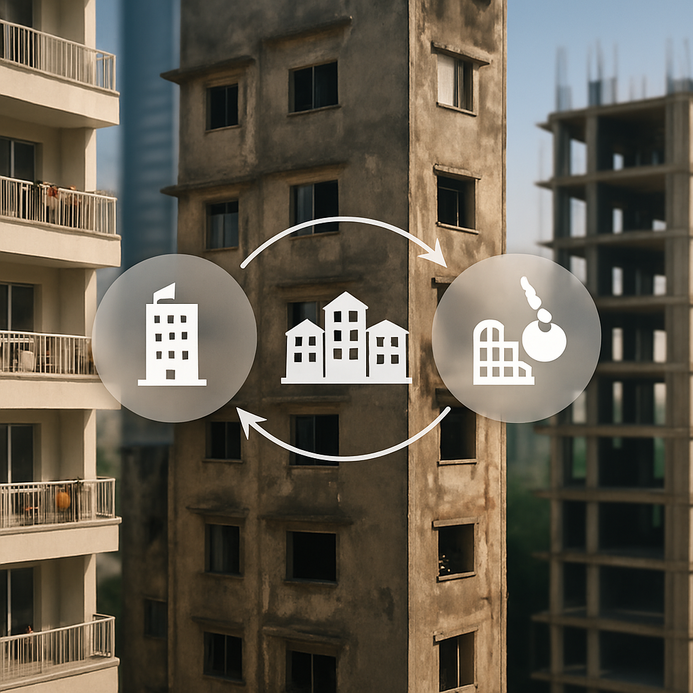Home Loan Denied? Your Step-by-Step Guide to Approval Next Time
- 1 Understanding Home Loan Rejections: A Quick Dive
- 2 FAQ
Understanding Home Loan Rejections: A Quick Dive
Applying for a home loan is more than just filling out forms; it requires careful planning and understanding of potential pitfalls. Unfortunately, loan applications are often rejected due to common mistakes. Being aware of these reasons can help set realistic expectations and prepare you for future applications.
Common Reasons for Home Loan Rejection
1. Low Credit Score: Falling below 650 can significantly hinder your chances. Most lenders prefer scores above 700. To improve your score, use an EMI calculator for home loan to understand how timely payments can help boost it.
2. High Debt-to-Income Ratio: If your monthly debt payments exceed 40% of your income, lenders may find you too risky. Always keep your debts in check.
3. Insufficient Documentation: Missing or inaccurate documents can derail your application. Having complete and correct paperwork is crucial to avoid rejection.
4. Employment Stability: Regularly changing jobs raises concerns. A solid employment history reassures lenders of your reliability.
5. Property Evaluation Issues: If the property’s valuation doesn’t align with your loan request, you’re likely to face rejection.
Here’s a simple rundown of the reasons for rejection and their impacts:
| Reason for Rejection | Impact on Application |
|---|---|
| Low Credit Score | Significant |
| High Debt-to-Income Ratio | High |
| Insufficient Documentation | Moderate |
| Employment Stability | High |
| Property Evaluation Issues | Significant |
Immediate Next Steps After Rejection
If your application gets rejected, don’t panic, it’s an opportunity to learn. Begin by identifying why you were rejected; use this information as a foundation for your improvements. If your credit score is a concern, use an home loan monthly EMI calculator to strategize feasible payments that could enhance your score.
It’s also crucial to engage with lenders for insights into their requirements. Understanding what lenders are looking for can greatly influence your next steps.
Common Reasons for Home Loan Rejection
Knowing why lenders might say “no” can prevent frustration in the future. Common barriers include low credit scores, insufficient income, and excessive debt levels.
| Reason | Description |
|---|---|
| Low Credit Score | Scores below 750 are often seen as risky. |
| Insufficient Income | Having inadequate income to support the EMIs is critical. |
| High Debt-to-Income Ratio | High existing debts can deter lenders. |
| Unstable Job History | Frequent job changes raise flags for lenders. |
| Poor Credit History | Previous defaults can severely impact approval chances. |
To avoid rejection, utilize an EMI calculator for home loan to evaluate your financial situation accurately. Understanding your financial limits and improving them can greatly enhance your application.
Taking the time to familiarize yourself with your financial health and loan terms will position you better for future applications.
Actionable Steps After a Rejection
Facing a rejection is disheartening, but it can also be a catalyst for positive change. Consider these concrete actions:
1. Seek Detailed Feedback: Contact your lender to uncover specific reasons for the rejection. This information is invaluable for making necessary adjustments.
2. Review Your Credit Report: Obtain a copy of your credit report to identify your score and rectify any errors. Even minor inaccuracies can hurt your application. Learn more about improving your credit score using an home loan EMI calculator.
3. Assess Your Financial Situation: Use an EMI calculator for home loan to evaluate your debt-to-income ratio and devise a realistic repayment plan.
4. Know Your Rights: Familiarize yourself with your rights as a borrower according to local regulations. This knowledge can empower you in discussions with lenders.
5. Explore Alternate Lenders: If one lender turns you down, others may have different criteria. Don’t hesitate to explore other options.
6. Reapply Strategically: After you’ve rectified the issues from your previous application, reapply with a stronger case.
7. Consider Professional Guidance: Consulting a financial advisor can give you insights into improving your application and financial health.
Taking these actionable steps can lead you closer to securing that home loan. Don’t forget to use an EMI calculator for home loans to help with repayment planning.
For a comprehensive guide on obtaining a home loan after rejection, refer to this detailed guide.
Addressing the Issues: Fixing Common Problems
Getting declined for a home loan is tough, but recognizing common hurdles can better prepare you for future applications. Here’s a breakdown of key factors and how to address them.
Boost Your Credit Score
A strong credit score is crucial. A score above 750 generally yields better results. To enhance your score:
– Clear off outstanding debts.
– Maintain credit utilization below 30%.
– Ensure timely payments.
Regular monitoring of your credit report is also essential; catching errors early can make a significant difference. You can utilize an EMI calculator for home loan to project possible repayments within your budget.
Ensure Consistent Income
Lenders need to see stable income as a sign of reliability. Gather proof of income, such as pay stubs, especially if you’ve moved jobs frequently.
Reduce Your Debt-to-Income Ratio
Aim for a debt-to-income (DTI) ratio of less than 40%. This ratio indicates financial stability. To improve your DTI:
– Pay down current debts.
– Seek opportunities to increase your income.
Demonstrating financial stability can improve your chances of loan approval.
Common Reasons for Rejection
| Reason | Details |
|---|---|
| Low Credit Score | Frequently below the acceptable threshold of 750. |
| High Debt-to-Income Ratio | Shows financial overextension. |
| Insufficient Income | Can’t verify income or it’s too low for EMIs. |
| Poor Loan History | Past defaults adversely impact chances. |
Addressing these issues before reapplying can significantly increase your chances of approval. Planning smartly with tools like an EMI calculator for home loan can also guide your financial decisions.
To further enhance your chances, you might want to explore home loan prepayment strategies.
Strategic Reapplication: Improving Your Chances
After facing a rejection, it’s crucial to formulate a strategic approach for reapplication. Here’s how to improve your chances.
Assess Your Financial Health
First, evaluate your overall financial stability. Key aspects lenders consider include your credit score, job stability, and existing debts. Tools like an EMI calculator for home loan are excellent for understanding your repayment capabilities.
Improve Your Credit Score
If your credit score led to the rejection, now is the time to address it. Check your report for errors and rectify them. Lowering your debt-to-income ratio can also positively influence your score over time.
Timing Your Reapplication
Timing can be crucial. After addressing the issues that led to your last rejection, it’s wise to wait at least six months before reapplying. This demonstrates improvements to potential lenders and may coincide with favorable interest rates.
Gather Necessary Documentation
Before reapplying, ensure that your documents are in order to demonstrate financial stability. Gather salary statements, bank records, and any additional proof of income.
Explore Loan Options
Not all lenders are stringent. Different lenders have varying requirements. Research alternatives to find those with less stringent loan criteria, which may increase your chances of approval.
By actively using resources like an EMI calculator for home loan and refining your financial health, the reapplication process can become less intimidating. Preparation and diligent attention to your financial health are key to overcoming previous rejections and securing that home loan.
FAQ
Q: What is a credit score and why is it important for getting a home loan?
A: A credit score is a numerical representation of your creditworthiness. Lenders use it to assess your reliability in repaying loans. Generally, scores above 700 are viewed favorably for home loans.
Q: How can I improve my debt-to-income ratio?
A: To improve your debt-to-income ratio, pay down existing debts and increase your income whenever possible. Aiming for a ratio below 40% can enhance your chances of loan approval.
Q: What should I do if my home loan application gets rejected?
A: First, seek feedback from your lender to understand the rejection reasons. From there, work on improving the aspects they identified, whether it’s your credit score, income stability, or documentation.
Q: How long should I wait to reapply for a home loan after a rejection?
A: Typically, it’s advisable to wait at least six months after rectifying the issues that caused the rejection. This allows you to present a stronger application in your next attempt.













